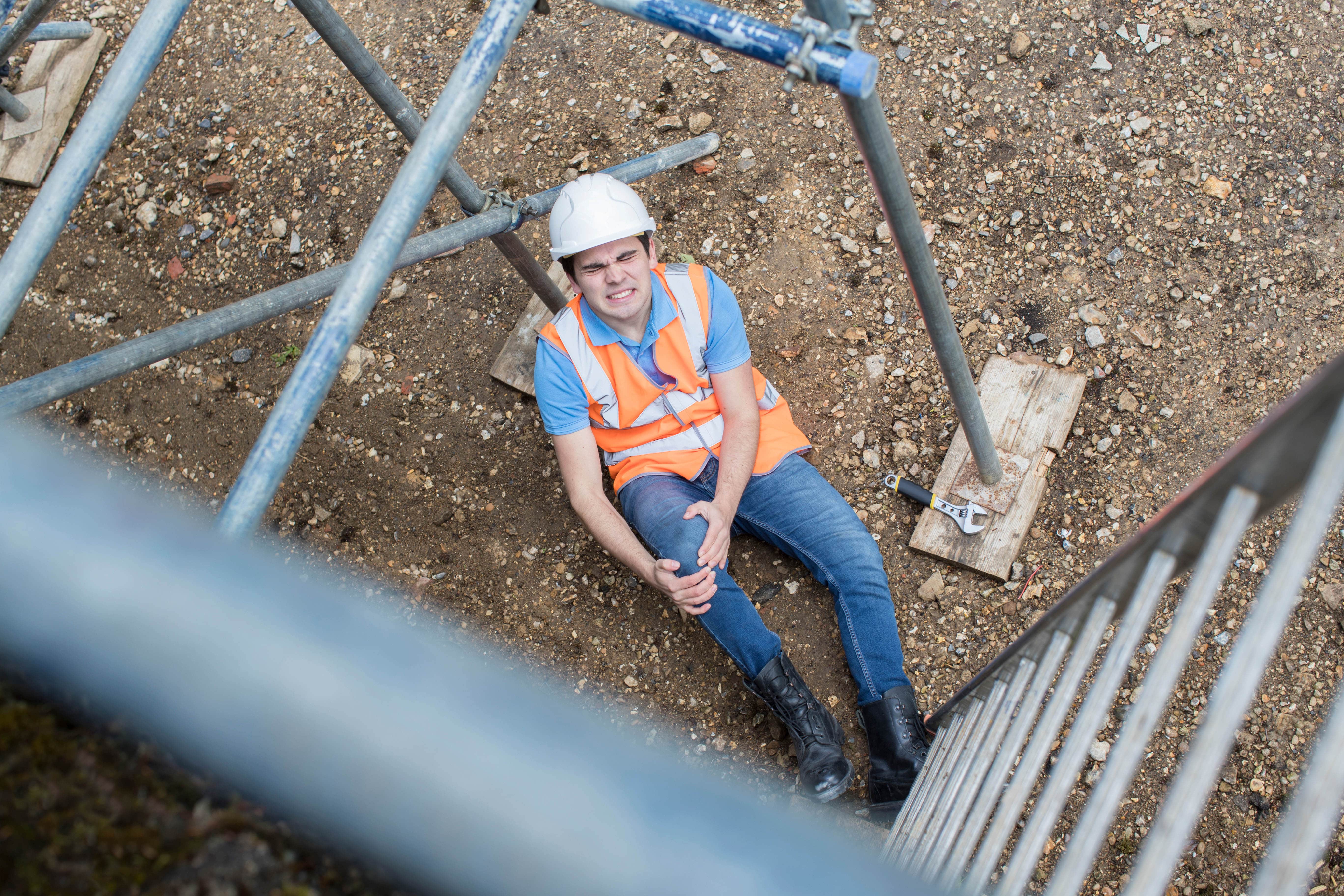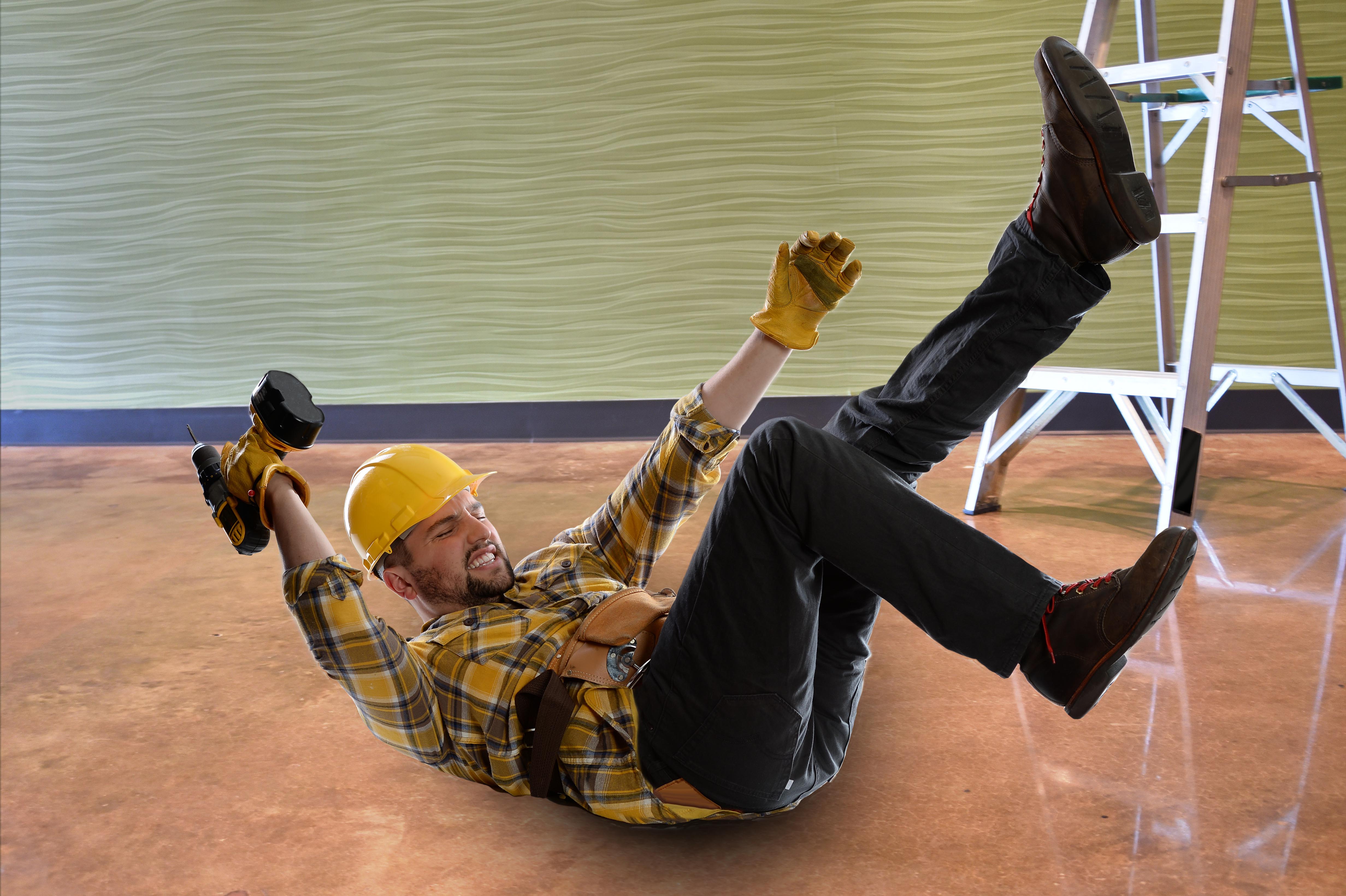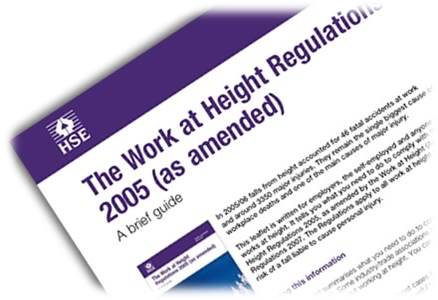Working at height remains one of the most hazardous activities in many industries. Despite the stringent regulations and safety protocols in place, accidents still occur, often due to human factors that extend beyond regulatory compliance. These elements, such as fatigue, complacency, lack of fitness, and distractions, play a crucial role in work at height safety.
How many accidents occur due to working at height in the UK?
Statistics reveal a concerning reality. In 2022/23 in the UK, 40 workers lost their life due to falling from height, and a further 4,937 workers suffered injuries due to falls from height, making up 8% of non-fatal injuries reported under RIDDOR 2021/22.
Over two-thirds of all major work at height injuries are caused by low falls i.e., two metres or less. Someone injured by falling from height loses on average 9.4 days from work.
Working at height can be very dangerous and it should not be undertaken without the correct training, competencies, resources and paperwork. Understanding the human elements affecting safety in these scenarios is vital in addressing and mitigating the associated risks effectively.

What are the ‘human factors’ that can affect work at height safety?
Various human factors contribute to height-related accidents. Let's delve into some examples:
- Attention and Perception: Focusing on tasks and recognising potential risks is crucial. Distractions and complacency can lead to lapses in attention and safety protocol adherence.
- Group Behaviour and Peer Pressure: Influence from colleagues or peer pressure may lead to unnecessary risks. Cultivating a culture of safety and responsibility within teams is crucial.
- Weather Conditions and Delays: Unpredictable weather significantly impacts work at height. Adequate preparation for adverse weather and delay protocols are essential.
- Noise Levels: High noise levels hinder communication and concentration, potentially leading to mistakes or accidents. Implementing noise-reduction measures is vital.
- Site Layout and Housekeeping: Organised sites reduce hazards and accidents. Regular inspections maintain proper housekeeping and minimise risks.
- Fitness and Health: Physical fitness is essential for safe work at heights. Ensuring employee fitness and providing health support is critical for safety.
- Domestic and Work-Related Stress: Stress from personal or work-related factors can impact decision-making. Employers should support their workers and promote a healthy work-life balance.
- Workload: Balancing workload is crucial to maintain concentration and prevent errors or accidents.
- Fatigue: Long hours, irregular shifts, and demanding tasks lead to fatigue, impairing decision-making. Proper management and breaks are essential.
- Time Pressure and Deadlines: Urgency can lead to rushed decision-making, compromising safety. Realistic timelines and a safety-first culture are priorities.
MRS focuses on addressing these factors in our training programs. We emphasise situational awareness, stress management, communication, and planning to ensure worker safety and reduce accidents.

What can an employer do to reduce the risks?
Working at height demands not only technical expertise but also acute awareness of the impact of human factors on safety. Understanding and addressing these key human factors can significantly reduce the likelihood of working at height accidents and promote a culture of safety.
Here’s what employers can do to tackle working at height risks related to human factors:
- Attention and Perception:
- Implement regular training and awareness programs focusing on concentration and visual awareness.
- Use visible markers, signage, and colour-coded safety equipment to aid attention and perception at height.
- Group Behaviour and Peer Pressure:
- Foster a culture that encourages reporting and open communication without fear of judgement.
- Train employees to recognise and resist peer pressure that compromises safety measures.
- Weather Conditions and Delays:
- Develop contingency plans that consider adverse weather conditions and potential delays, allowing for safe work rescheduling.
- Equip workers with appropriate PPE and training to handle various weather scenarios.
- Noise Levels:
- Provide adequate hearing protection and noise-cancelling equipment to ensure clear communication and attentiveness.
- Implement noise reduction strategies where possible to minimise distractions and improve focus.
- Site Layout and Housekeeping:
- Maintain a clean and organised work environment to reduce trip hazards and potential distractions.
- Conduct regular inspections to ensure proper housekeeping and efficient site layout that minimises risk.
- Fitness and Health:
- Conduct pre-employment health assessments and provide ongoing health initiatives to ensure workers are physically fit for the job.
- Encourage regular exercise to enhance overall fitness.
- Domestic and Work-Related Stress:
- Promote mental health awareness and support systems to assist employees dealing with stress.
- Implement stress management workshops and programmes to help individuals cope with personal and work-related pressures.
- Workload (Overload and Underload):
- Ensure workloads are balanced to prevent fatigue or rushing through tasks.
- Optimise job scheduling to avoid excessive pressure or long periods of inactivity.
- Fatigue:
- Encourage sufficient rest periods and provide shift patterns that combat fatigue.
- Educate workers on the signs of fatigue and the importance of alertness when working at height.
- Time Pressure and Deadlines:
- Set realistic deadlines and goals, allowing sufficient time for safety protocols to be followed.
- Encourage open communication to revise deadlines if necessary for safety compliance.
Employers, employees, and safety professionals must work hand in hand to create a workplace where human factors are understood, respected, and mitigated to ensure the safety and well-being of all workers, especially when working at height.
What are the Working at Height Regulations?
In the UK, working at height is strictly regulated. The Work at Height Regulations of 2005 outlines specific requirements to ensure safety, including risk assessments, appropriate equipment, and competent personnel.
Compliance with these regulations is vital, but addressing human factors goes beyond mere regulatory obligations, making a substantial difference in injury and fatality prevention.
Since the inception of the regulations, MRS Training & Rescue has collaborated with numerous organizations, tailoring our expertise to address the unique needs of each. Recognising the diverse nature of working at heights, we specialise in providing customised consultancy services designed to craft specific solutions for various challenges in this field.
Our personalised programme is adept at assessing and generating detailed reports for categorising different working at height scenarios. With a wealth of experience operating in high-risk environments and possessing specialised skills in this domain, we've become an ideal collaborator for many companies embarking on tasks involving elevated workspaces.

Reduce working at height incidents with MRS
We provide a diverse range of working at height training programmes, from rooftop training to working at height rescue training, that address the full spectrum of safety considerations, including the human factors discussed here today.
All our courses are designed to align with the latest regulations and the stipulations outlined in the Work at Height Regulations 2005. Our diverse array of courses ensures that successful participants not only gain comprehensive knowledge but also have the flexibility to select between receiving an MRS certificate or one issued by the pertinent awarding body upon completion.
Partner with MRS to protect your people and your productivity.




